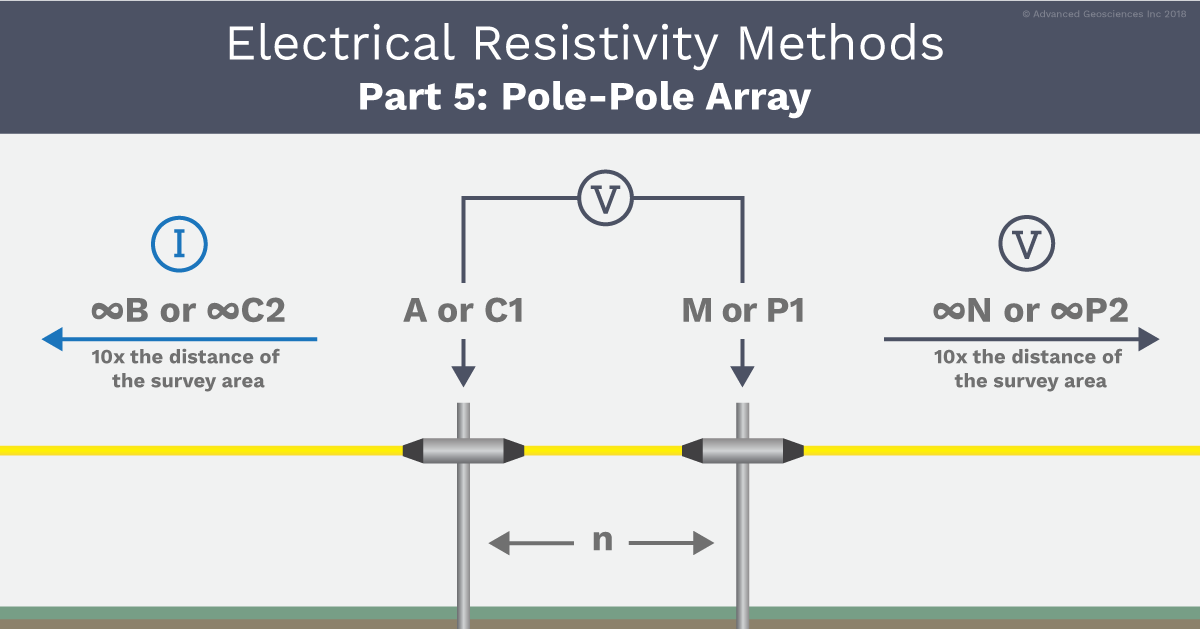
Electrode arrays are different arrangements of electrodes used to perform geophysical resistivity measurements. Electrode arrays were developed in order to make field measurements more efficient and data interpretation easier.
Today, we’re discussing the pole-pole electrode configuration—this is the fifth article in our series exploring 11 electrode arrays and methods. We’ve also covered the following:
What is the pole-pole array?
The four electrodes in the pole-pole array are arranged so that the distance between the transmitter (A&B) dipole and the receiver (M&N) dipole is small in comparison. In fact, the distance ought to be 10% that of the A&B dipole.
In a pole-dipole survey, one transmitting electrode is moved away from the dipole to infinity (i.e., 10 times the distance of the survey area) so the instrument doesn’t sense the pole electrode. In a pole-pole survey, one receiver electrode is also moved to infinity, but additionally, one of the potential electrodes is moved to infinity in the opposite direction. In other words, in a pole-pole array, you have a stationary infinity electrode on either side of the survey area.
Then proceed with your resistivity or induced polarization measurements exactly as you would with a pole-dipole array: Move the A and M electrodes to a new location inside the survey area and take a reading with AGI’s SuperSting instrument.

Considerations For Using The Pole-Pole Array
The primary issue with using the pole-pole array is space—a problem that makes it far less common than both the dipole-dipole array and the pole-dipole array. The two infinity electrodes are stationary, but you need to place them far out in opposite directions, and you may have to get permission to place them on someone else’s land. You also have to consider hazards like traffic, creeks, or brush when handling the connecting wire. A large MN may pick up plenty of cultural, SP, and telluric noise.
For example, if you wanted to conduct a resistivity survey to look for groundwater at approximately 300-400 meters deep, you would need to have two kilometers between your electrodes. This is an enormous area to cover for a survey, and there are numerous things to consider in this circumstance, including the cost, the amount of time it takes to roll out the wire, and the labor necessary.
Furthermore, you have to be mindful of any physical or geographical hazards. For instance:
-
You may need permission from the owner of neighboring land to place your electrode over their boundary.
-
You could be restricted if the electrode cable needs to cross a busy road.
-
Bodies of water or vegetation may complicate matters.
Questions about the pole-pole array?
We’ll be happy to respond to any comments or questions you have about the pole-pole array or any other arrays. Simply fill out the form on this page, and we’ll be in touch.

